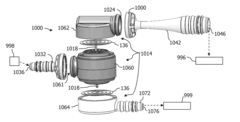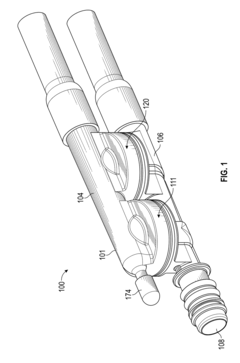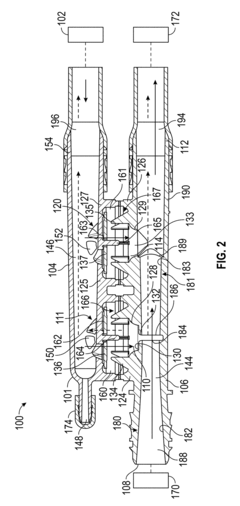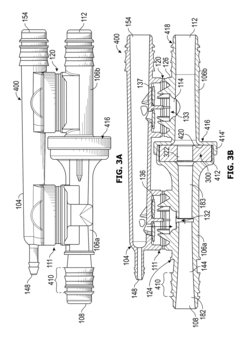Improving The High Purity Of Check Valves
Check Valve Technology Background And Goals
The report will delve into the historical evolution of check valve technology, tracing its development trajectory and highlighting the milestones that have shaped its progress. It will also outline the expected technological goals and performance benchmarks that future advancements should strive to achieve in terms of purity levels and operational efficiency.
Check Valve Market Demand Analysis
- Market Size and Growth
Analyze the current and projected market size for check valves, considering factors like industrial applications, infrastructure development, and replacement demand. Provide quantitative data on market value and growth rates. - Application Segments
Identify key application areas driving the demand for high-purity check valves, such as pharmaceuticals, food and beverage, semiconductor manufacturing, and chemical processing. Assess the specific requirements and growth potential in each segment. - Regional Demand Patterns
Examine the regional distribution of demand for high-purity check valves, highlighting regions with significant market presence and growth opportunities. Consider factors like regulatory standards, industrial development, and consumer preferences. - Competitive Landscape
Analyze the competitive dynamics in the high-purity check valve market, including major players, market shares, and product offerings. Identify key differentiators and competitive advantages driving customer preferences. - Emerging Trends and Drivers
Discuss emerging trends and drivers shaping the demand for high-purity check valves, such as stricter regulations, technological advancements, and changing consumer preferences towards safer and more reliable products.
Technology Status And Challenges
- Valve Purity Challenges
High purity is crucial for check valves in industries like pharmaceuticals and semiconductors. Contaminants can compromise product quality and yield losses. - Material Selection
Selecting appropriate valve body and component materials is key to minimizing contamination risks. Corrosion-resistant alloys and polymers are preferred. - Surface Finish
Smooth internal surfaces with precise machining and polishing help prevent particle entrapment and biofilm formation. - Cleaning and Sterilization
Effective cleaning and sterilization procedures are essential to maintain valve purity during operation and maintenance. - Design Optimization
Optimizing valve design to minimize dead zones, crevices, and complex geometries can reduce contamination risks.
Current Technical Solutions
01 High Purity Materials
Check valves designed for high purity applications are constructed using materials that minimize contamination and ensure compatibility with the fluids being handled.- High Purity Design: Check valves designed with high purity materials and construction to prevent contamination and ensure compatibility with ultra-pure fluids used in various industries.
- Improved Sealing Mechanisms: Check valves featuring enhanced sealing mechanisms, such as specialized sealing materials, precise machining, or unique valve seat designs, to achieve superior leak prevention and maintain high purity levels.
- Self-Cleaning or Anti-Fouling Features: Check valves incorporating self-cleaning or anti-fouling features, such as specialized coatings, surface treatments, or unique valve geometries, to prevent buildup of contaminants and maintain high purity levels.
- Modular or Replaceable Components: Check valves designed with modular or replaceable components, allowing for easy maintenance, cleaning, or replacement of specific parts to maintain high purity levels and extend the service life.
- Advanced Materials and Coatings: Check valves constructed with advanced materials, such as high-purity plastics, ceramics, or specialized metal alloys, and coatings to enhance chemical resistance, durability, and compatibility with high-purity fluids.
02 Self-Cleaning Features
Some check valves incorporate self-cleaning mechanisms to maintain high purity levels during operation, such as specialized valve designs that promote flushing or scouring action.Expand Specific Solutions03 Advanced Sealing Mechanisms
High purity check valves often employ advanced sealing mechanisms to prevent leakage and maintain the integrity of the fluid flow, such as specialized gaskets, bellows, or diaphragms.Expand Specific Solutions04 Integrated Purging Systems
Some high purity check valves incorporate integrated purging systems that allow for periodic flushing or cleaning of the valve components to maintain the desired purity levels.Expand Specific Solutions05 Specialized Surface Treatments
High purity check valves may undergo specialized surface treatments to enhance their compatibility and cleanliness, such as electropolishing, passivation, or application of coatings.Expand Specific Solutions
Technology Main Player Analysis
Rotarex SA
Shin-Etsu Polymer Co., Ltd.
Key Technology Interpretation
- Reducing stress on the sealing member and extending the life of the check valve.
Check Valve High Purity Improvement Economic Analysis
Check Valve High Purity Improvement is essential for applications that demand stringent cleanliness standards, such as pharmaceutical, semiconductor, and food processing industries. This economic analysis aims to evaluate the potential benefits and costs associated with implementing strategies to enhance the purity of check valves. The demand for high-purity check valves is driven by the need to minimize contamination risks and maintain product quality. Industries with stringent purity requirements are willing to invest in advanced valve technologies to ensure compliance with regulations and customer expectations. By improving the purity of check valves, manufacturers can reduce the risk of product recalls, maintain brand reputation, and potentially gain a competitive advantage in their respective markets. However, achieving higher purity levels often requires additional manufacturing processes, specialized materials, and rigorous quality control measures, which can increase production costs. The economic analysis should consider the potential return on investment by weighing the additional costs against the potential benefits, such as increased market share, reduced liability risks, and improved operational efficiency.



